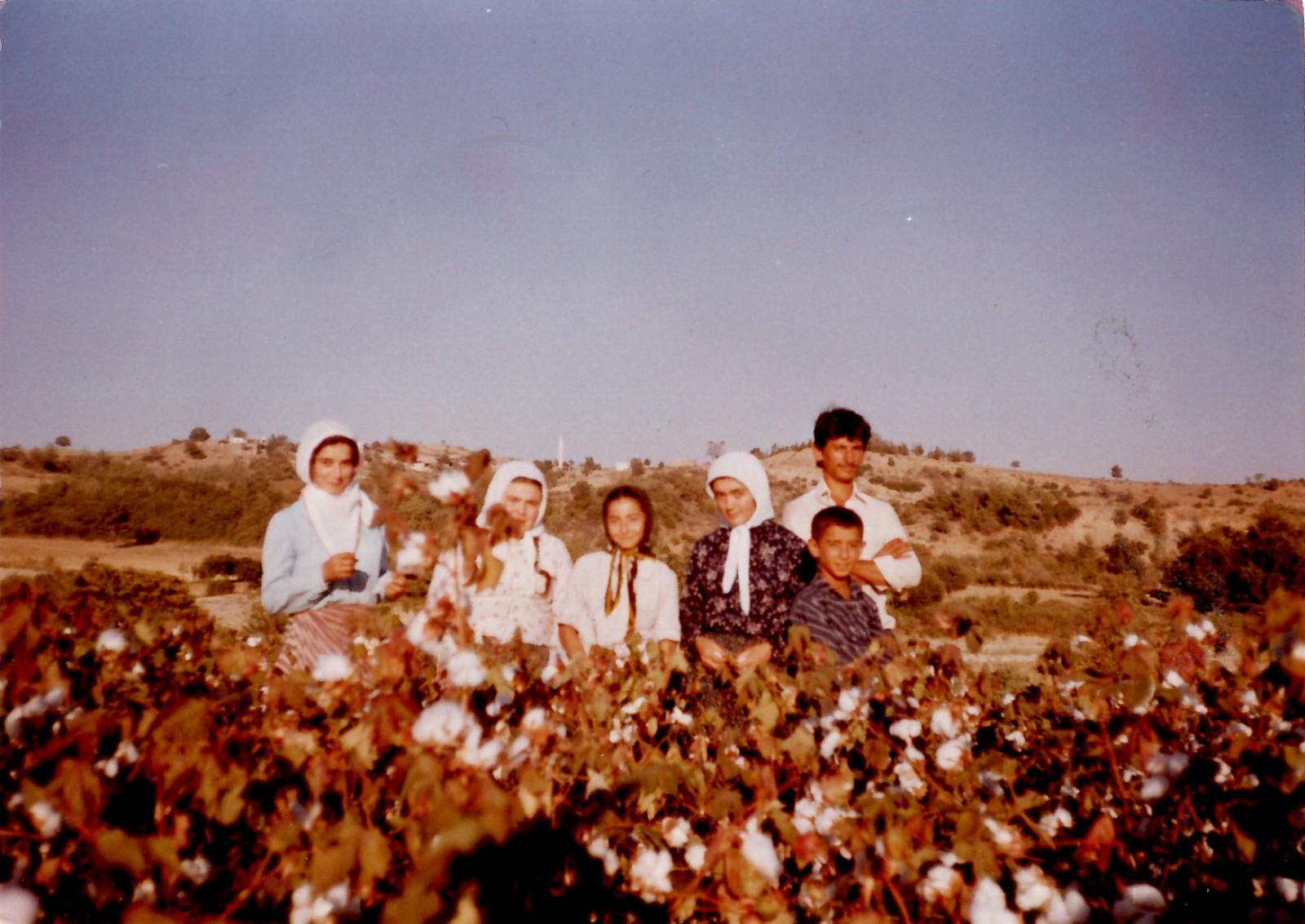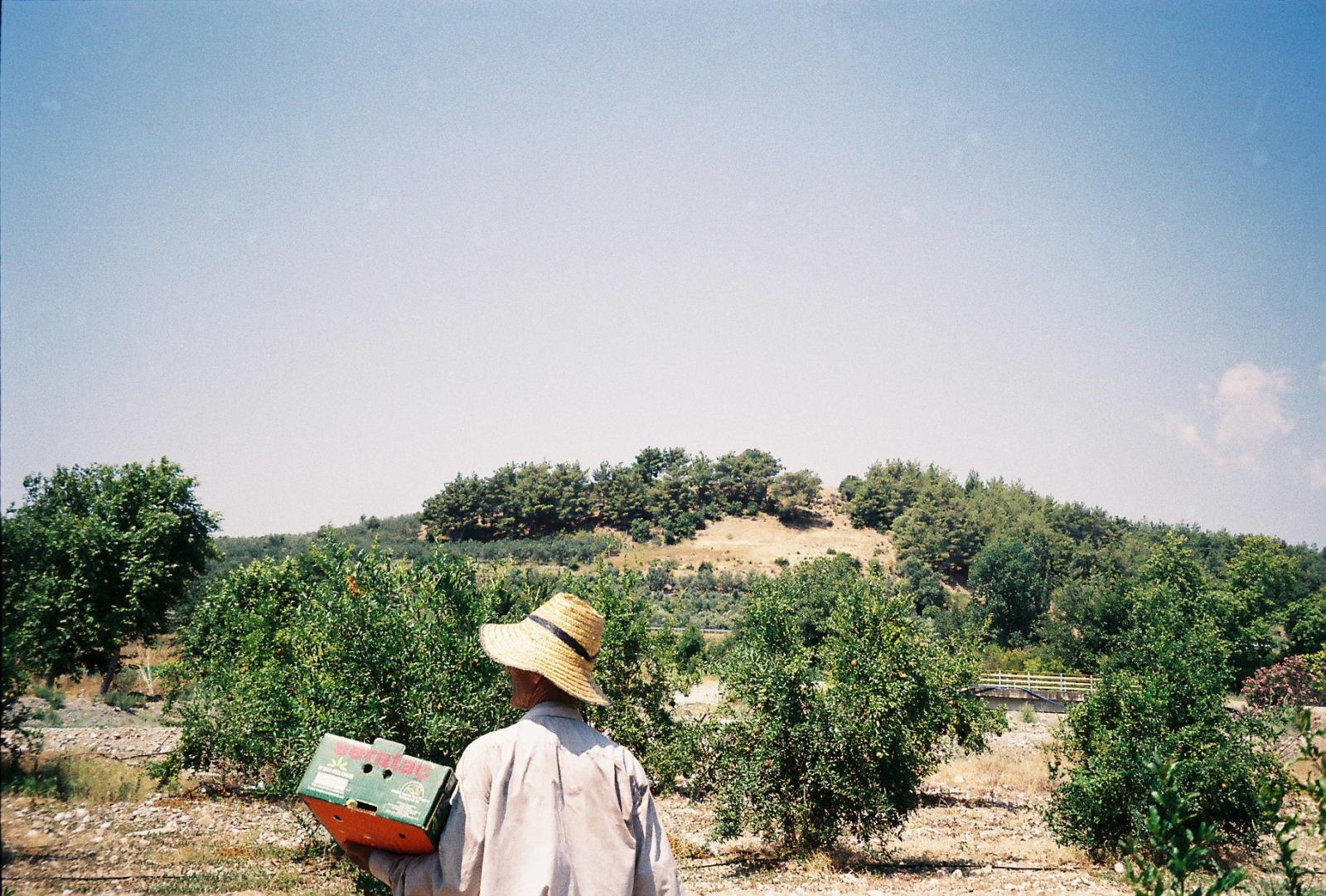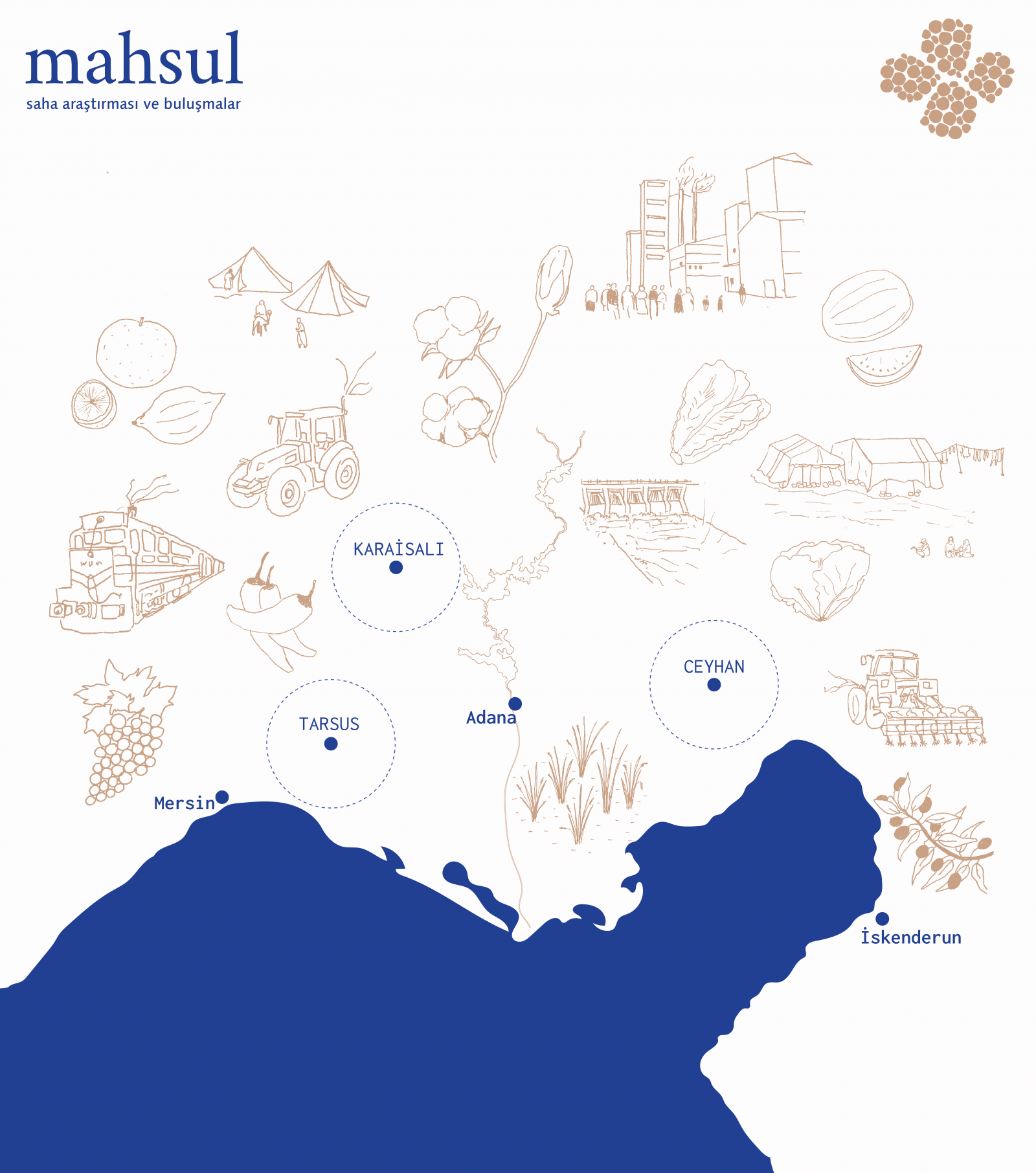Crop
December 2022 - October 2023
ADANA, MERSİN, ONLINE
The convergence of agriculture with industry has transformed Çukurova rapidly in the last two centuries. This integration is directly related to the modernization ideals inherited from the Ottoman Empire to the Turkish Republic, and the changing economic and political desires. While underlining the ease of controlling settled and domesticated societies, James Scott points to the historical link established by the central administration with settled agriculture. While agriculture domesticates societies, landscape is also taken under control. In Çukurova, the sedentation and Turkification policies are followed by the transformation of the landscape: First the swamps are dried; the construction of water channels is followed by dams, dam lakes and hydroelectric power plants. As the desire for mass production increases and needs increase, the severity of the interventions in the landscape increases too. The Crop project proposes to question these interventions through ecological cycles that spread throughout the process and trigger each other, to study it through the testimonies of human and nonhuman beings, and to consider it together with the climate crisis, food chain and industrial agriculture issues.
The Crop project first proposes a new perspective on the crop concept. From this point of view, the decisions taken for the productivity of the crop, the traces left on the landscape and the urban metabolisms triggered along with them, are considered as crops grown on the same soil. The project aims to establish the connections between the crops in Çukurova, both through literature studies and records, and through field research and meetings. It aims to meet with local producers who produce at different scales in the field to talk about the past, present and future of crops, and to bring studies examining the transformation of Çukurova and the development of crops to the agenda with public presentations. While following the traces left by the development of the agricultural industry, which constantly travels between the urban and the rural, in Çukurova's social memory, the project aims to remember by following the path presented by the selected novels of Yaşar Kemal and Orhan Kemal, and to reach the testimonies of the transformation of the region.
The focus subject of the project concerns not only Çukurova but also different regions of Anatolia. Therefore, it is important for the project to reach a wider audience. For this reason, the material gathered during the field research and meetings will be published interactively throughout the project process. In addition to being a research journal, the published material is aimed to establish a database that reflects the connections revealed by the project and an archive developed through participation.






